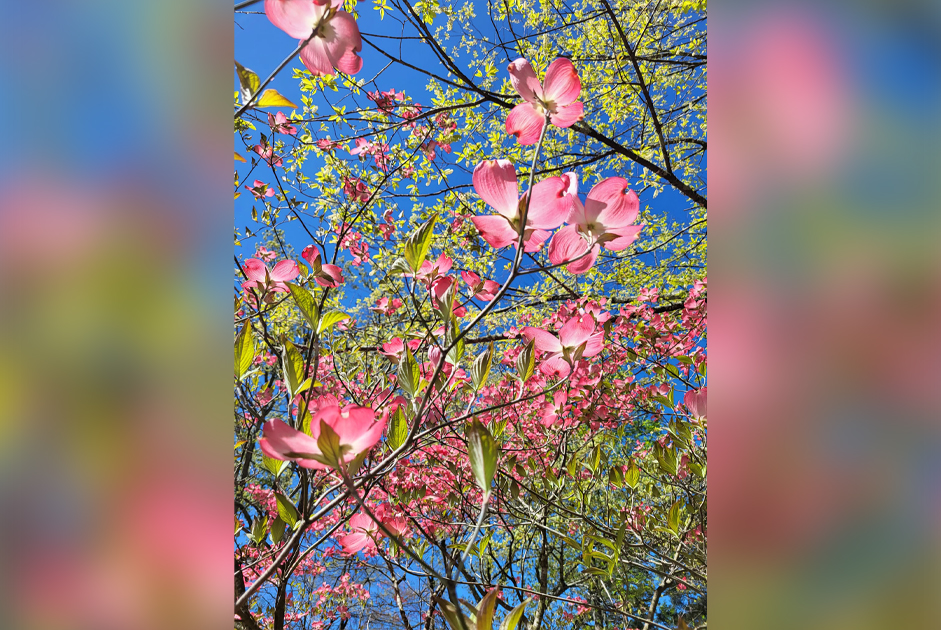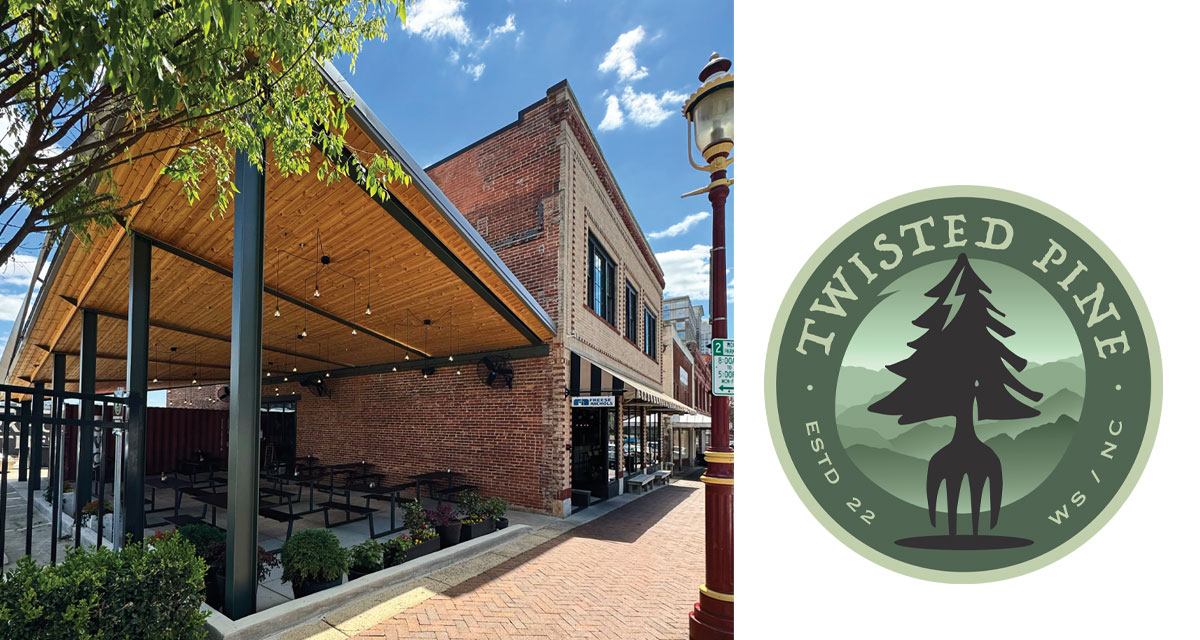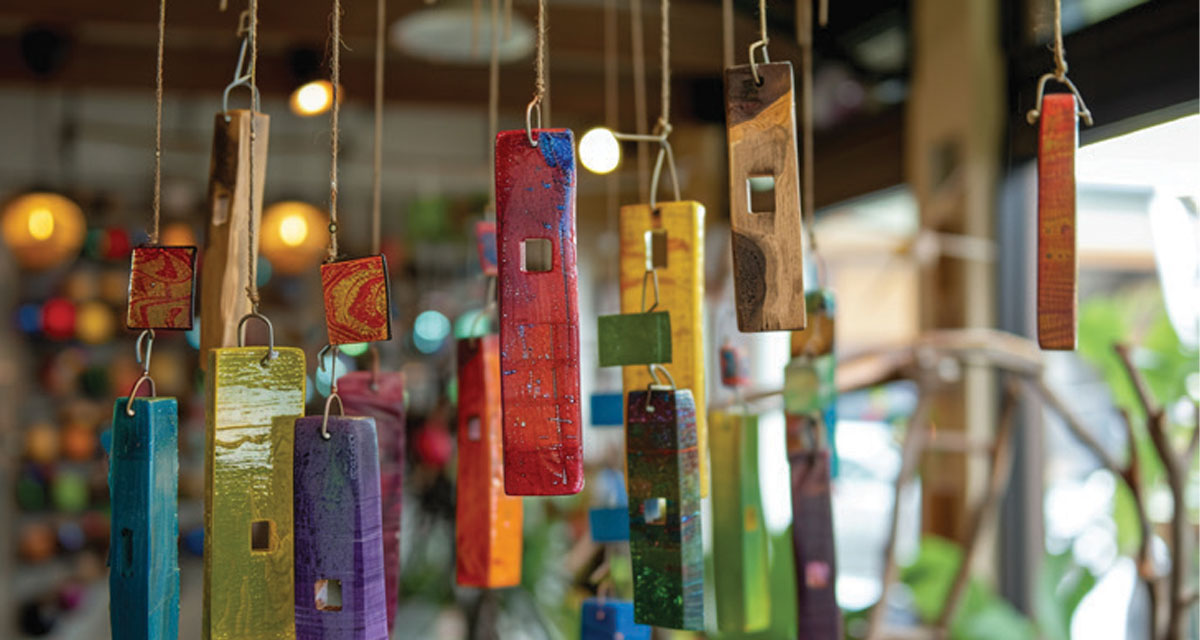by RENEE SKUDRA
In March of 2016, after an arduous three-day drive from northern California, I landed at my new house in front of which sat a tree that I had never seen in my life. A friendly neighbor stopped by and advised that the tree, with its canopy of dense white blossoms, was in full bloom albeit briefly; however, it could still give any form of nature a beautiful run for its money for that evanescent period of time. My love affair with the dogwood tree began on that day; I can earmark it precisely in time. I began gathering stories and information about it immediately, learning that it is the state tree of North Carolina (as well as that of Virginia, Missouri and New Jersey). Growing mostly in the southeast, they reach a height between 15-40 feet and, depending upon the species (there are eleven), can be shrubs or small trees. Allegedly, the largest one in North Carolina stands in a cemetery in Clinton with branches that reach out to 48 feet. Folk wisdom has it that people here know it is not really spring until the dogwoods bloom, showy and gorgeous, pink or white blossoms shooting their incalculable beauty into the world in a pure moment of pomp and splendor.
Beauty is as beauty does, and this tree never disappoints. Dogwoods are commonly used in landscape and street plantings and, as a garden tree, are used for shade around patios, shrub borders or backdrop species; although many lawns proudly showcase them as single specimens on the green. This valuable ornamental species’ flowers offer pollen for pollinators, and the spring sprouts are a food source for numerous insects, birds and mammals. The trees’ canopies serve as a habitat for living creatures, and the red berries from the trees are a rich food source which is high in calcium and fat content. Sundry living animals like beavers, gray foxes, black bears and deer can be seen happily partaking in it if they happen to be part of your neighborhood. Wood from the trees also has a commercial value – it is utilized in the manufacture of tool handles, spools, spindles, roller skates and golf club heads.
Historically, the dogwood tree occupied an important role. Native Americans, for example, have long recognized the many medicinal attributes of the tree and used the roots, berries and leaves in many ingenious ways including the making of dye. According to a commentator on the website Patch.com, in his article “Dogwoods – Medicinal Monday” (3/12/2018), tea was made from the inner bark and used to treat malaria and fever. During the American Civil War especially, the bark of the tree became a much-needed replacement for often-absent quinine, to treat the mosquito-transmitted disease of malaria which often afflicted soldiers in their camps. It proved useful in helping them cope with the debilitating and, unfortunately, sometimes fatal symptoms of malaria.
Early Native Americans held dogwoods highly in their estimation. They considered them symbols of safety and protection. In Northwestern tribes such as the Makah, the dogwood symbolized good luck, and numerous native peoples used their bark for treating headaches, fatigue, diarrhea and as a poultice to place upon boils and wounds. In American culture, dogwoods had their own particular symbolism. According to Jose Lopez in his article “Dogwood: Myths and Medicine” (5/28/2019), he mentions that, according to Christian tradition, especially in the south, blossoms on dogwood trees are considered to bear the scars of Jesus’ crucifixion when they bloom in spring. He notes in a wry tongue-in-cheek manner that dogwoods definitely did not grow in Jerusalem at the time of Jesus, but the story nevertheless perseveres and gives to the dogwood a grand spiritual significance.
The beauty of the dogwoods captivated many people including Presidents George Washington and Thomas Jefferson whose respective estates (Mr. Vernon and Monticello) included the trees in their landscaping plans. The trees even enjoyed an association with romance – during the Victorian era, men would give an unmarried woman they wished to court a dogwood blossom to determine whether she favored him. Acceptance of the flower was a signal that the lady was interested while a flower that was returned was a sign of unrequited love.
Although the tree’s blossoms last only three or four weeks, its pristine beauty is not diminished, as bright red berries appear in the fall, and its life cycle moves through different pretty leafy patterns in consequent seasons. As the cream-colored leaves edged with purple depart, there is still the handsome dark mottled pattern of the bark to appreciate. As Anne Morrow Lindbergh once remarked “… I don’t know why I am always asking for private individual selfish miracles when, every year, there are miracles like white dogwood.” Who could disagree?






















